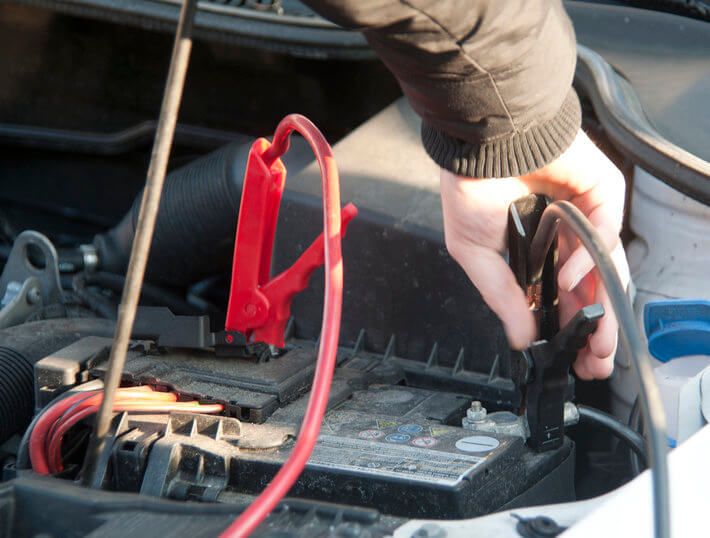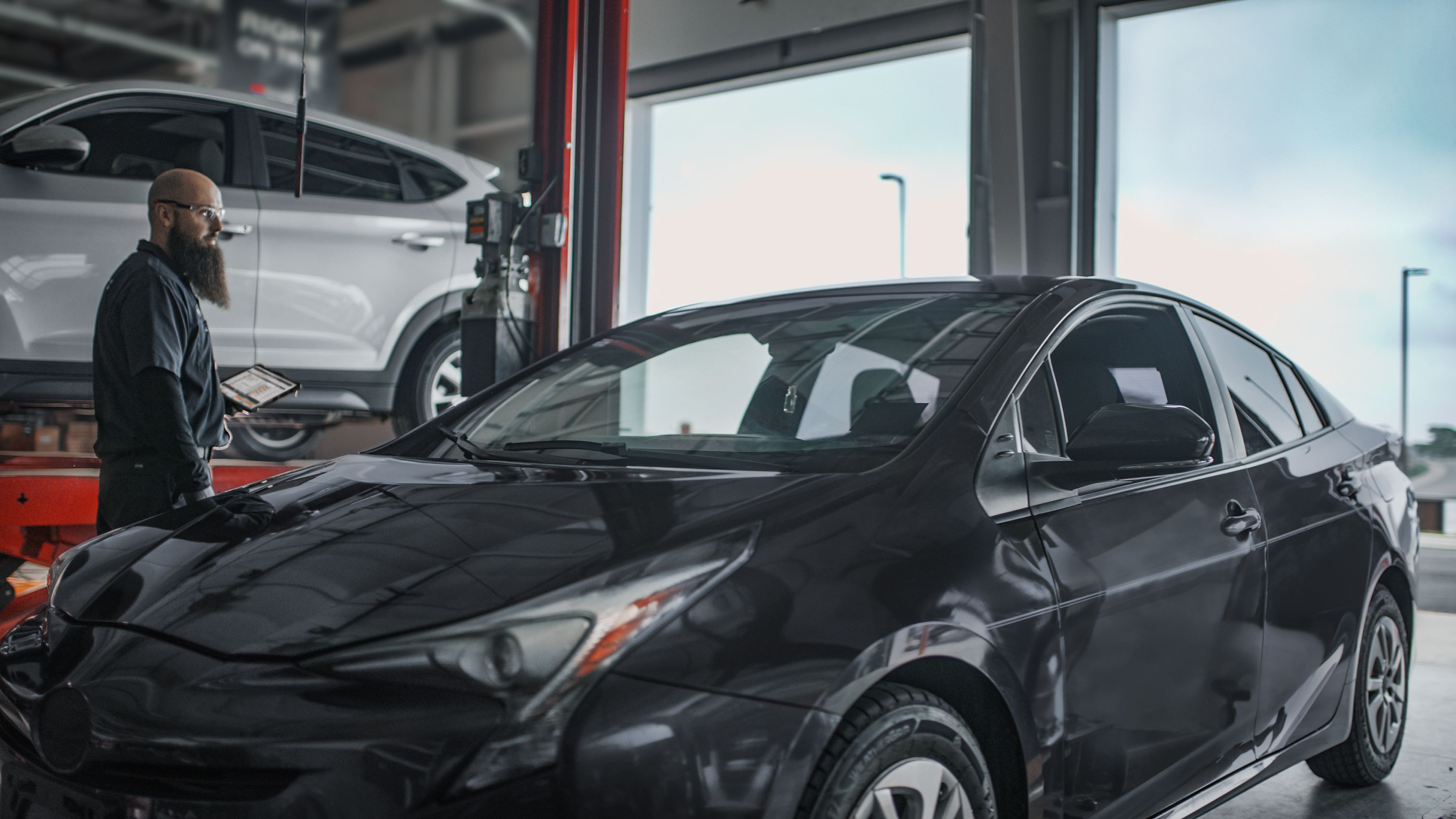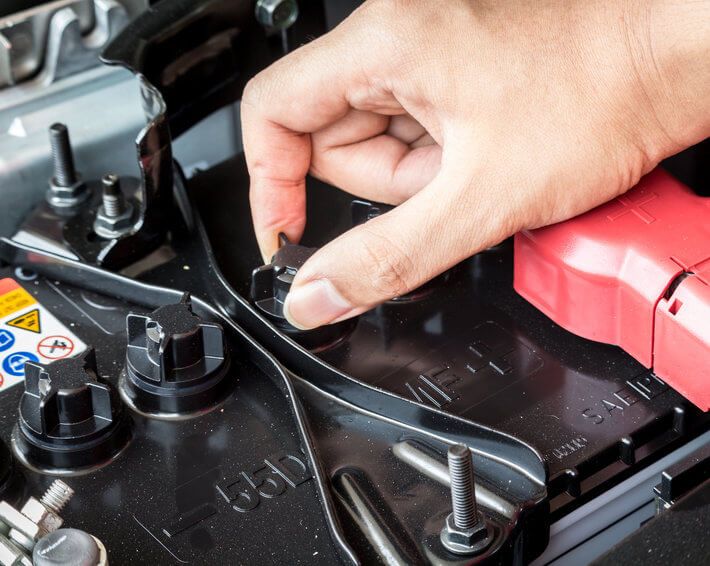You know replacing car batteries is a critical part of your vehicle's maintenance, but do you know what to look for in buying a car battery? There are many factors to consider, and your choice of battery could affect your vehicle's performance for years to come.
Read on to learn what types of car batteries there are, the most important car battery features to consider, and which battery we recommend to meet your high-performance needs.
What Types of Car Batteries Are There?
Are all car batteries the same? If you're not used to changing your own car battery, you might be surprised to learn that there are a lot of varieties to choose from! Fundamentally, most batteries work the same way: by turning chemical energy into electrical current. But the main differences in battery types and sizes come from how they're constructed.
Flooded Lead Acid Batteries
The most common battery type — flooded lead-acid batteries — have been used for decades. Also known as wet cell batteries, these conventional batteries consist of six cells, each containing lead plates submerged in a sulfuric acid/water solution called electrolyte.
Each cell produces about two volts of electricity so that the whole battery provides approximately 12 volts. Unless you drive a vintage car (pre-1960s), almost all cars use 12-volt batteries.
There are two common types of flooded lead-acid batteries:
Starting, Lighting, Ignition (SLI) Battery: These batteries are the most basic, and are what most cars come installed with from the factory. SLI batteries are reliable for starting your engine and powering basic accessories like headlights and wipers.
With older SLI batteries, you may find that you have to occasionally top off the electrolyte solution with distilled water to keep it running properly. These batteries must also be installed vertically to prevent spillage.
Enhanced Flooded Battery (EFB): EFBs are essentially a higher-performing type of SLI battery and are often used in vehicles with start-stop technology. They function the same as SLI batteries, but are sealed to improve battery endurance. Enhanced flooded batteries usually last twice as long as conventional SLI batteries and are a good entry-level battery for cars with start-stop technology.
Sealed batteries, like EFBs, are less susceptible to the effects of heat and evaporation and are referred to as "maintenance-free" because they typically don't need topping off with water.
Valve-Regulated Lead Acid (VRLA) Batteries
Like flooded batteries, valve-regulated lead-acid batteries generate electricity using lead submerged in an electrolyte solution. The difference with VRLA batteries, however, is that they are completely sealed.
They don't vent gases and are less likely to spill, no matter how they are placed inside a car. For this reason, VRLA batteries are generally considered low maintenance, safer options for many vehicles.
The two most common types of VRLA batteries include:
Gel Cell Battery: Gel cell batteries — also known as dry cell batteries — have silica inside the electrolyte solution, turning it from a liquid into a gel. Not only does this prevent them from spilling, but it also makes gel cell batteries more resistant to high temperatures and evaporation. This means they have a longer cycle life than conventional batteries and greater resistance to vibrations and shock.
While some gel cell batteries are available for automotive use, most people opt for the higher-performing AGM battery as their go-to choice for VRLA batteries.
Absorbent Glass Mat (AGM) Battery: AGMs represent the latest and greatest in lead-acid battery technology. Rather than a free-floating electrolyte solution like in SLI and EFB batteries, AGM batteries use fiberglass separators to absorb the electrolyte solution and hold it in place.
AGMs are designed to have a very long life and can withstand repeat draining and recharging cycles much better than conventional batteries. They are also better at holding a charge through long periods of disuse and are more likely to recover from a deep discharge.
These qualities make AGM batteries ideal for modern cars with high power demand. But this enhanced performance comes at a price. According to Consumer Reports, you can expect to pay 40-100% more for AGM batteries than conventional batteries.
Other Car Battery Types
While the above battery types cover what most people will have to choose from, there are a few other types of car batteries worth mentioning, such as:
Deep Cycle Battery: Deep cycle batteries — also called marine batteries — are best for delivering sustained, low current power over extended periods of time. They get their name from their ability to repeatedly recover from cycles of deep discharging and recharging without suffering damage as conventional batteries would.
Deep cycle batteries are not suited for cars, trucks, or SUVs, but rather vehicles like RVs, boats, and golf carts that need to power electronics without an engine running.
Lithium-Ion Battery: Lithium-ion batteries are the standard batteries for most modern hybrid and electric vehicle high voltage battery packs. Lithium-ion batteries store more energy, charge faster, are lighter, and last longer than their conventional counterparts. Some newer vehicles come equipped with a 12-volt lithium-ion battery from the factory.
What to Look For in a Car Battery
When searching for a new car battery, there isn't a singular "best" car battery to buy. Instead, it's a question of which battery is best for your vehicle's specific make and model? Here are a few considerations when choosing the best battery for your car:
Battery Size & Terminal Position
The BCI number is the first and most important thing you should look for when choosing a new battery. BCI stands for Battery Council International, an organization that standardized how battery sizes and terminal positions are labeled.
The BCI number indicates the fit of your battery — its dimensions (length x width x height) and the location of its terminals. Terminals can either be placed on the side (side-post batteries) or on top of the battery as either standard or recessed top-post terminals.
A BCI number of 35, for example, indicates that the battery has top terminals and fits most Japanese brands, including Honda, Nissan, and Toyota. BCI numbers are essential to get right as the wrong number may result in a battery that does not secure properly in the battery tray or whose terminals are unreachable by the battery cables.
Since there are many different BCI numbers, your best bet is to look at the number listed on your current battery. You'll also want to double-check the manufacturer-recommended BCI number in your owner's manual before committing to a new battery.
Cold Cranking Amps (CCA)
Cold-cranking amps measure the number of amps available for 30 seconds at 0°F. That's it! CCAs are a general gauge for how well a battery performs in extremely cold weather.
So, is a higher CCA battery better? Not necessarily. A higher CCA rating simply means the battery can provide more juice when it's really cold outside. Just because a battery has a CCA of 850 doesn't mean it will use all that amperage. Rather, it will use the minimum amount of energy required to get your engine going. A super high CCA rating doesn't hurt, but going further than the car manufacturer’s CCA specification will only have limited value.
Warranty
One sign of a quality car battery is the offered warranty. Most warranties typically include a free replacement period and a limited performance warranty. Batteries with longer warranties tend to be more reliable.
An extended warranty not only protects you for longer, but it also indicates that the manufacturer is confident in their product. DieHard® Platinum batteries, for example, offer an impressive 4-year free replacement warranty.
Getting your battery installed by an expert technician at your local Firestone Complete Auto Care can help you avoid mistakes that might void your battery's warranty down the road.
Battery Type
Whether you've been using a standard SLI battery or a heavy-duty AGM battery, the safest choice is to stick with the same type for your new battery. However, if you're looking to get a battery with a longer life and more CCAs that can handle extended disuse better than a conventional SLI, consider the DieHard Platinum AGM. Just make sure you've got the correct BCI number for your vehicle.
What you shouldn't do is downgrade battery types. If your newer car model came with an AGM battery, for example, replace the old battery with another AGM. Downgrading to a cheaper battery may result in inadequate power supply to key vehicle functions like the start-stop system or certain safety features.
Battery Freshness
Since batteries start decaying the moment they're manufactured, you want your new battery to be as fresh as possible. Look for the manufacture date, indicated by a sticker on the case. The date will typically be in month/year format, such as 08/21, meaning the battery was produced in August of 2021. Try to buy a battery that is no more than six months old.
So, Who Makes a Good Car Battery You Can Buy?
While there are plenty of battery brands out there, we recommend DieHard® batteries for your car, truck, or SUV. Their Stamped Grid Technology offers nearly 3X more corrosion resistance, greater durability, and 60% more electrical flow than standard flooded batteries.
DieHard® batteries are reliable even in the most extreme weather conditions and are built to meet the needs of today's power-hungry vehicles. They're America's most trusted auto battery for a reason!
No matter what kind of vehicle you drive, DieHard® batteries come equipped with everything you need in a high-performance battery. Get yours today at Firestone Complete Auto Care.



